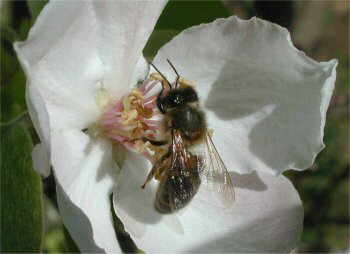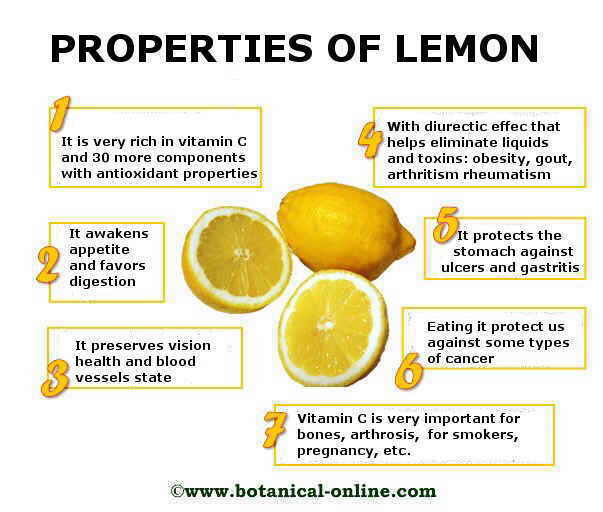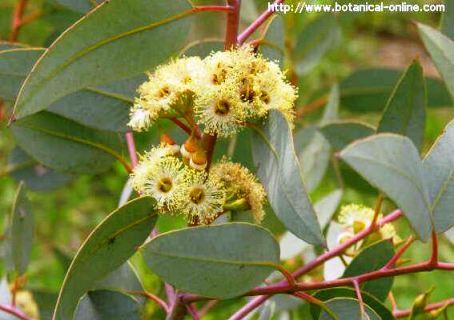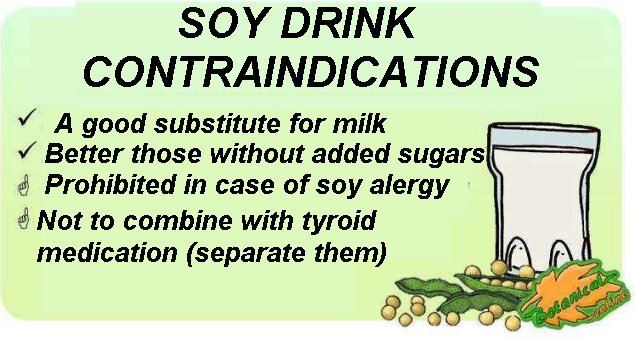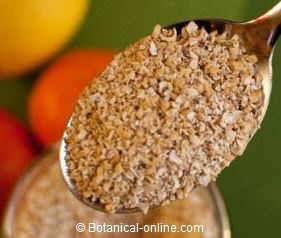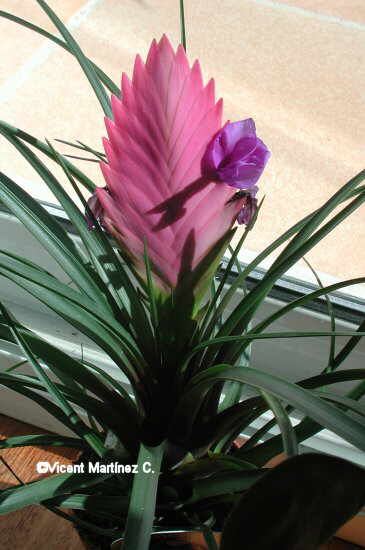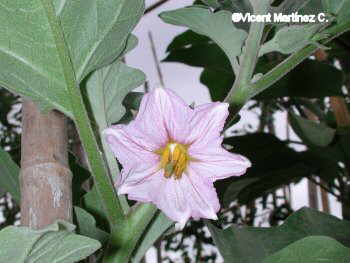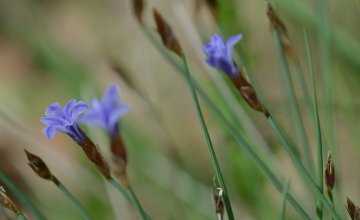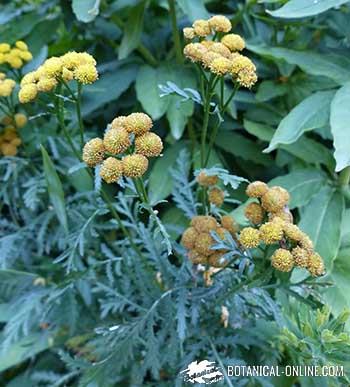Contents
- 1 Classes of pollinators
- 1.1 HOW ARE FRUIT TREES POLLINATED?
- 1.2 Importance of pollination in fruit trees
- 1.3 What type of pollination do fruit trees have?
- 1.4 What is cross-pollination?
- 1.5 How to favour pollination?
- 1.6 The importance of bees in the pollination of fruit trees
- 1.7 List of trees pollinated by bees
- 1.8 What is a pollinator tree?
- 1.9 Fruit trees pollinated by wind
- 1.10 List of pollinator trees
Classes of pollinators
HOW ARE FRUIT TREES POLLINATED?
Importance of pollination in fruit trees
There are varieties of fruit trees that can produce fruit without being fertilized. This type of development is called parthenocarpy, a process that produces fruit without seeds. Some varieties of oranges, grapefruits, and persimmons are produced in this way.
Parthenocarpy may occur as a result of a genetic mutation or by different growing techniques. Besides fruit trees, we have other plants that can produce seedless fruits like cucumbers, tomatoes, melons, bananas or pineapples.
Except for these special cases, a fruit tree needs to be pollinated to produce fruits. Pollination is the passage of pollen from the male flower to the female.
Pollination allow the pollen to come in contact with the ovule to fertilize it.
Fertilization involves the growth of the carpel walls and the transformation of ovules into seeds. The thickening of the carpel is what produces the fruit. (For more information on pollination)
What type of pollination do fruit trees have?
The pollination of fruit trees is mostly entomophilous, that’s to say, it is doned by animals, especially insects, and among these mostly by bees.
A few fruit trees are wind pollinated, what it is called as anemophilus pollination . Besides the pollinating agents or pollinators, some trees that are also considered pollinators because they provide the adequate pollen for other varieties of the same species to be be pollinated.
Some fruit trees can be self-pollinated, that’s to say, pollen from one flower can pollinate another flower of the same tree or a flower can be pollinated by their own pollen. In the first case, they require the existence of a pollinator. In the second case, they may need or may not need an agent to carry the pollen from the anther to stigma of the same flower.
In the latter case, although the pollinator is not strictly necessary, its presence can increase production.
What is cross-pollination?
In many cases the trees have the resources to avoid self-pollination and need cross-pollination, that’s to say, the pollen must come from the flower of another tree. In this case the trees will require a pollinator (insects or wind) and a tree pollinator.
How to favour pollination?
It is estimated that adding pollinating insects can increase the production of fruit trees by 20%. For example, having a rich heritage in bees is a good way to ensure the harvest of many fruit trees.
Studies in Chile in 2004 about fruit trees pollinated by bees (almonds, cherries, plums, apples, pears, kiwis and avocados) determined that for 102,000 ha a total of about 882,000 hives were needed.
By 2012 some 114,000 ha of fruits trees are expected that will need approximately 940,000 hives.
The importance of bees in the pollination of fruit trees
Fruit trees benefit of beekeeping, while beekeepers benefit of horticulture. One of the most egregious cases of pollination control takes place in the major gardens in the USA. About one million hives are spread annually between almond orchards. This generates a huge movement of transport by trucks that move almost half of the hives in the country.
Keep in mind that the ability of bees to pollinate also depends on environmental conditions.
Bees pollinate least in periods of rain and wind and in temperatures below 12 or 13 ° C. Modern horticulture is increasingly linked to the need to provide additional pollinators due to the increased presence of monocultures and the decline of wild pollinators.
In the first case, a very high number of bees is required for pollination of so many flowers that ripen at once. Subsequently, the bees must be transported to another place, as in the area of intensive monoculture no other plants will produce flowers. The decrease in the number of bees in the wild is a worrying subject.
This decrement is due to a number of reasons: bee diseases, pesticides and insecticides, cleaning of ditches and edges of forests, land consolidation with subsequent removal of hedges, alteration of natural areas, urban expansion, etc..
List of trees pollinated by bees
The following table shows a list of trees pollinated by bees or other insects:
| Tree name | Name and species of pollinator | Polinator importance |
| Papaya (Carica papaya) | Bees (Apis sp.) moths and butterflies | Essential |
| Cacao (Teobroma cacao) | Mosquitos | Essential |
| Macadamia (Macadamia ternifolia) | Bees (Apis sp.), stingless bees | Essential |
| Almond (Prunus dulcis) | Bees (Apis sp.), bumblebees and flies | Very important |
| Pear tree (Pyrus comunis) | Bees (Apis sp.), bumblebees and flies | Very important |
| Peach tree (Prunus persica) | Bees (Apis sp.), bumblebees and flies | Very important |
| Advocado (Persea americana) | Bees (Apis sp.) stingles bees | Very important |
| Mango (Mangifera indica) | Bees (Apis sp.), stingless bees, flies and wasps | Very important |
| Rambutan (Nephelium lappaceum) | Bees (Apis sp.), stingless bees, flies and wasps | Very important |
| Plum tree (Prunus armeniaca) | Bees (Apis sp.), flies and bumblebees | Very important |
| Cherry tree (Prunus avium) | Bees (Apis sp.), flies and bumblebees | Very important |
| Tart cherry (Prunus cerasus) | Bees (Apis sp.), flies and bumblebees | Very important |
| Apricot (Prunus armeniaca) | Bees (Apis sp.), flies and bumblebees | Very important |
| Apple tree (Malus sp.) | Bees (Apis sp.), bumblebees, syrphids | Very important |
| Durian (Durio zibethinus) | Birds,bats | Very important |
| Mandarin (Citrus reticulata) | Bees (Apis sp.) and bumblebees | unimportant |
| Walnut (Juglans regia) | Bees (Apis sp.) | unimportant |
| Kiwi (Actinidia chinensis) | Bees (Apis sp.) and bumblebees | unimportant |
| Fig tree (Ficus carica) | Wasps (Blastophaga psenes) | unimportant |
| Pomegranate (Punica granatum) | Bees (Apis sp.) and bumblebees | unimportant |
| Rowan (Sorbus domestica | Bees (Apis sp.) and flies | unimportant |
| Tamarind (Tamarindus indica) | Bees (Apis sp.) | unimportant |
| Lichi (Litchi chinensis) | Bees (Apis sp.) and flies | unimportant |
| Jujube (Zizypus jujuba) | Bees (Apis sp.), flies, beetles and wasps | unimportant |
| Longan (Dimocarpus longan) | Bees (Apis sp.), stingless bees | unimportant |
| Coconut (Cocos nucifera) | Bees (Apis sp.) and bumblebees | unimportant |
| Persimmon (Diospyros kaki) | Bees (Apis sp.) and bumblebees | unimportant |
What is a pollinator tree?
When choosing species and varieties, you should know that there are some varieties of trees that require a pollinator. This is not understood as a pollinator agent capable of transferring pollen from one plant to another, but a variety of tree whose pollen is valid to pollinate the trees of the same species.
This implies that the pollinator tree must produce pollen at the same time that the pollinated tree needs it. This means that they must be in bloom at the same time. Furthermore, the pollen produced by the pollinator must be compatible with the pollinated tree, meaning that it should be able to fertilize it.
Sometimes the amateur gardeners plant different varieties of the same species to ensure pollination. This can produce adequate results in small plantations. In extensive plantations, to ensure productivity and economic investment, it is best to be sure of the varieties we should plant by means of consulting a specialist.
- Varieties that require pollinator trees are: apples, almonds, plums, avocados, and pears.
- Varieties that do not require pollinators because they are self-pollinating are : apricot, orange, lemon, grapefruit, lime (or other citrus), peach, quince, lucuma, persimmons, etc.. The ability to self-pollinate ensures the production of fruits in individual specimens. This is why they are usually planted in small gardens although you can only have a single tree.
Fruit trees pollinated by wind
In anemophilous varieties pollination is done by wind. Some specimens, such as walnut, have male and female catkins on the same tree but they mature at different times. (Dichogamy)
The male inflorescences ripen on the branches of the previous season, while the female inflorescences do at the end of young shoots of spring.
Fertilization of samples of our gardening will always be ensured whenever trees in close proximity flourish at the right time. The use of pollinators ensures production in extensive plantations.
The olive tree is pollinated by insects and by wind. If pollinators are introduced, production is improved, but most plantations contain trees of the same variety.
List of pollinator trees
The following list offers a selection of pollinator trees:
| Pollinators trees table | ||
| Pollinator tree | Pollinator variety | Used to… |
| Pear tree (Pyrus comunis) | D’Anjou, Comice y Bosc | to pollinate Barlett |
| Pear tree (Pyrus comunis) | D ’Anjou, Bartlett, Seckel, Bosc, | to pollinate Comice |
| Pear tree (Pyrus comunis) | D ’Anjou,Bartlett, Seckel, Bosc, Comice, | to pollinate D’anjou |
| Pear tree (Pyrus comunis) | Comice y Bosc. | to pollinate Seckel |
| Pear tree (Pyrus comunis) | D’Anjou, Bartlett, Comice, Seckel | to pollinate Bosc |
| Plum tree (Prunus armeniaca) | (Self-fertile) Stanley, Damson, Earliblue, Italianan | to pollinate Queen Claudia |
| Plum tree (Prunus armeniaca) | Reina Claudia, Stanley, Italian | to pollinate Earliblue |
| Plum tree (Prunus armeniaca) | (Self-fertile) Reina Claudia, Stanley | to pollinate Damson |
| Plum tree (Prunus armeniaca) | (Self-fertile) Reina Claudia Stanley, Damson, Earliblue | to pollinate Italian |
| Plum tree (Prunus armeniaca) | (Self-fertile) Reina Claudia, Damson, Earliblue, Italian | to pollinate Stanley |
| Plum tree (Prunus cerasifera) | (Self-fertile) Burbank, Satsuma, Shiro, | to pollinate Santa Rosa |
| Cherry plum (Prunus cerasifera) | Santa Rosa, Satsuma, Shiro, | to pollinate Burbank |
| Cherry plum (Prunus cerasifera) | Burbank, Santa Rosa, Shiro, | to pollinate Satsuma |
| Apple tree (Malus ssp.) | Fuji, Gala, Red Delicious, Empire, Spartan, Braeburn | to pollinate Golden Delicious |
| Apple tree (Malus ssp.) | Fuji, Gala, Red Delicious, Empire, Spartan | to pollinate Braeburn |
| Apple tree (Malus ssp.) | Fuji, Gala, Red Delicious, Empire, Golden Delicious Braeburn | to pollinate Spartan |
| Apple tree (Malus ssp.) | Fuji, Gala, Red Delicious, Golden Delicious, Spartan, Braeburn | to pollinate Empire |
| Apple tree (Malus ssp.) | Fuji, Gala, Empire, Golden Delicious, Spartan, Braeburn | to pollinate Red Delicious |
| Apple tree (Malus ssp.) | Fuji, Red Delicious, Empire, Spartan, Braeburn | to pollinate Gala |
| Apple tree (Malus ssp.) | Gala, Red Delicious, Empire, Spartan, Braeburn | to pollinate Fuji |
| Cherry tree (Prunus avium) | Sam, Rainer, Garden Bing, Stella, Compact Stella, Van, Montmorency, | to pollinate lambert |
| Cherry tree (Prunus avium) | Sam, Garden Bing, Stella, Compact Stella, Van, Montmorency, lambert | to pollinate Rainer |
| Cherry tree (Prunus avium) | Sam, Garden Bing, Bing, Stella, Compact Stella, Montmorency, | to pollinate Van |
| Cherry tree (Prunus avium) | Sam, Garden Bing, Stella, Compact Stella, Montmorency, Rainer, | to pollinate Bing |
| Cherry tree (Prunus avium) Stella | Self-fertile | —– |
| Cherry tree (Prunus avium) Compact Stella | Self-fertile | —– |
| Cherry tree (Prunus avium) Garden Bing | Self-fertile | —– |
| Cherry tree (Prunus cerasus) Montmorency | Self-fertile | —– |
![]() More information about fruit trees.
More information about fruit trees.

